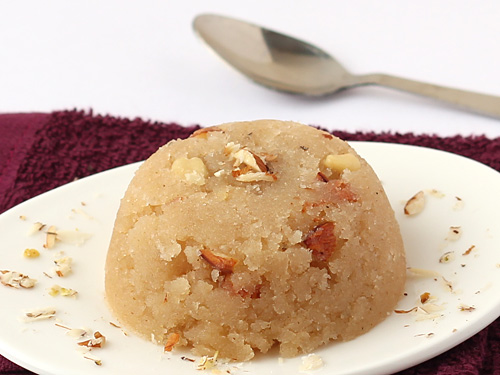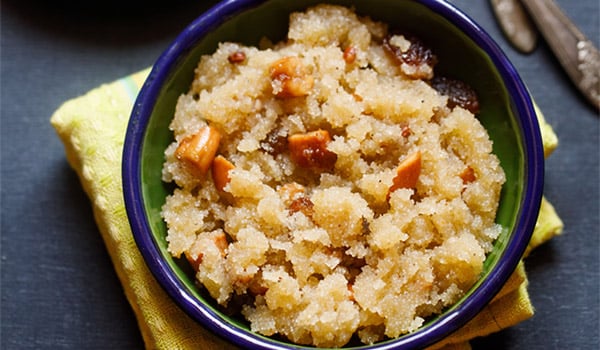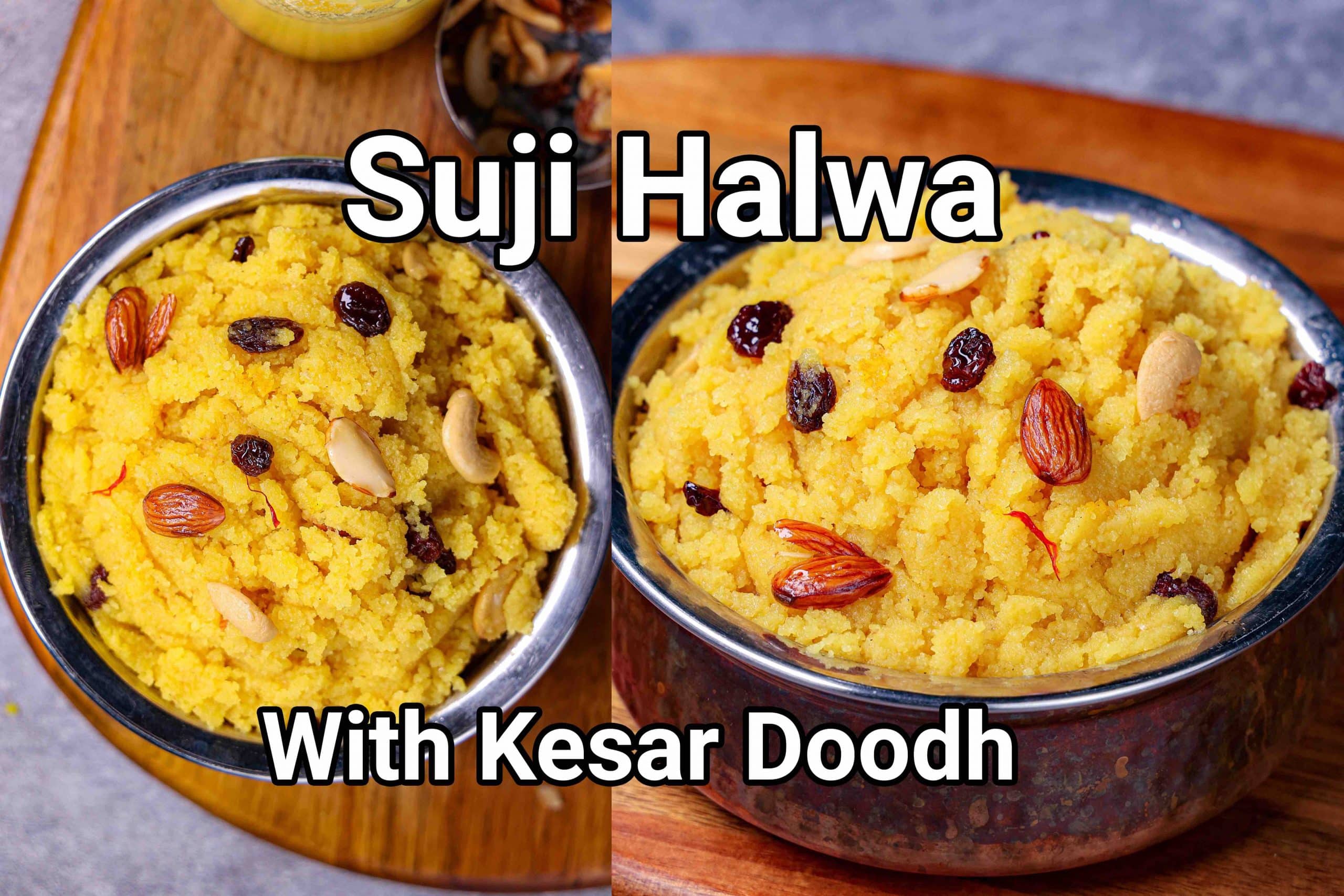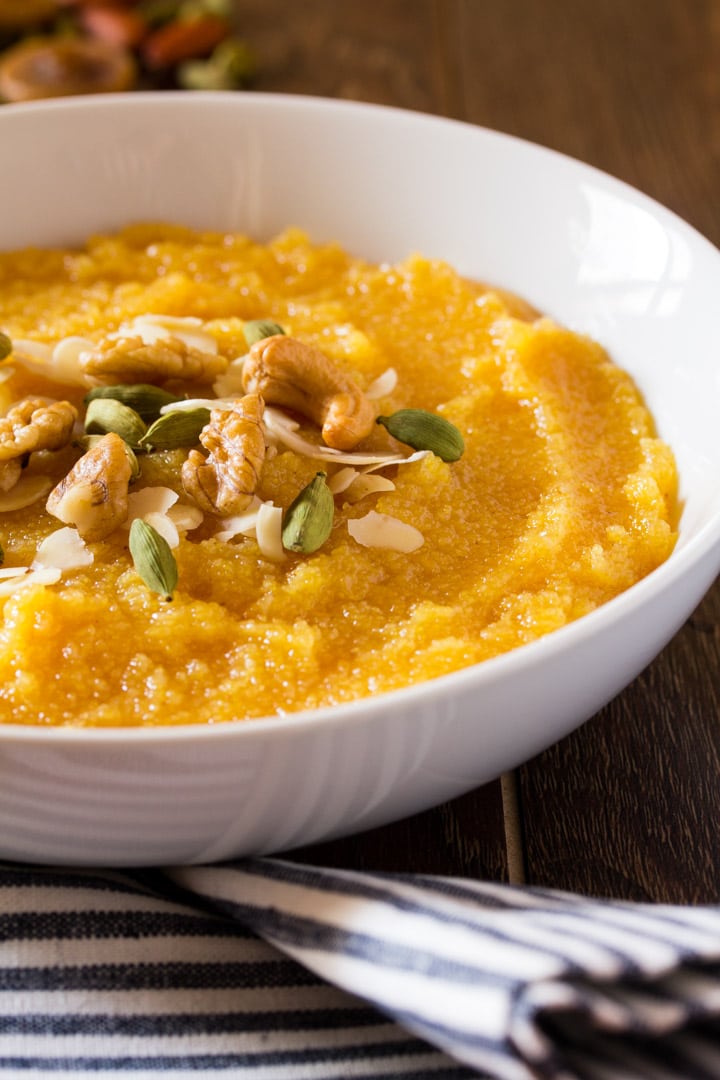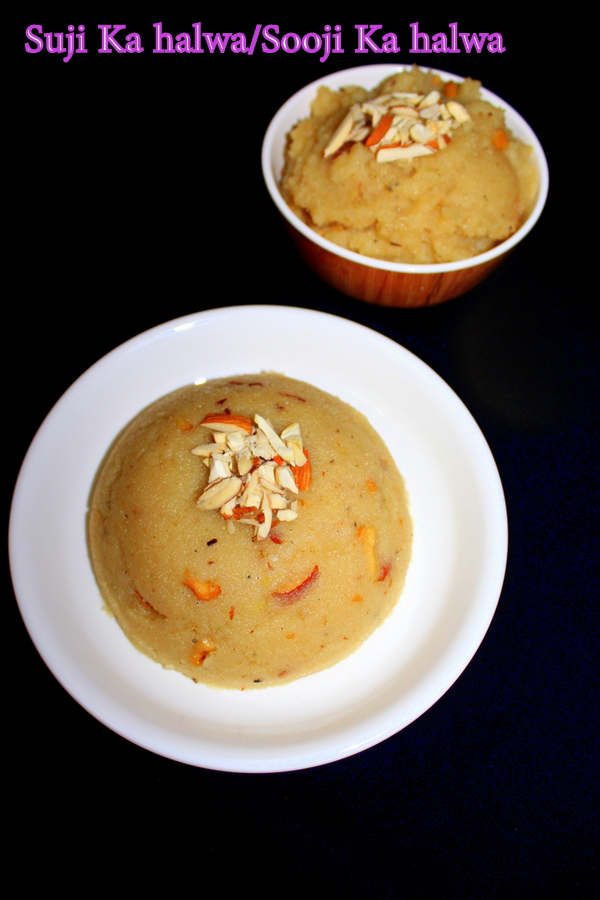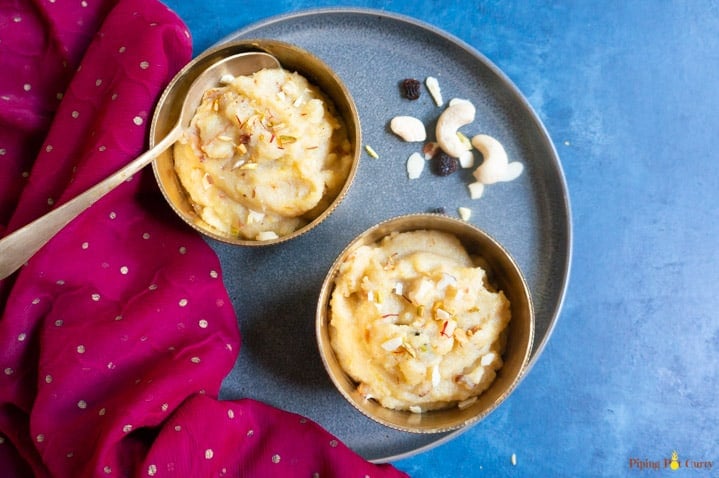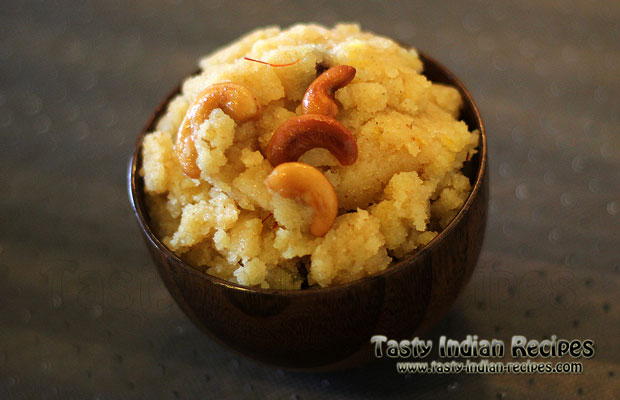Sooji halwa
sooji ka halwa, suji halwa, halwa e suji, halwa e sojee, suji halva, suji ka halwa, حلوای سوجی
Suji ka Halwa or Mohan Bhog (Hindi: मोहन भोग, Sanskrit: मोहन भोग) is a type of halvah made by toasting semolina (called suji, sooji, or rawa) in a fat like ghee or oil, and adding a sweetener like sugar syrup, honey, or jaggery powder. It can be served for breakfast or as a dessert item. The basic recipe is made with just semolina, sugar or honey, ghee, and sometimes milk. Variations on this include dried or fresh fruits, nuts, shredded coconut, and other toppings. Wheat flour is often used as a substitute if semolina is not available, but virtually any starch can be used to make Suji ka Halwa. In Medieval Arabic cuisine, semolina halvah was made by roasting the milled wheat in butter and adding honey or sugar syrup to moisten the dessert. One recipe for hulwa a'jamiyya is made by boiling honey to create the syrup (diluted with water if needed) and garnished with pistachio and poppyseed. Milk can be added, as well as toppings like almonds, pistachios and pine nuts. Ibn Sayyar al-Warraq's 10th-century cookbook includes varieties made with carrots, apples and dates. Earlier according to some scholars, this dish was introduced to India by the Mughals, but the theory was discredited as it was already listed as shali-anna, present-day Kesari bat, in Manasollasa, a 12th-century work by a South Indian Chalukyan king, Someshvara III. In 14th-century Spain, semolina was cooked with almond milk, oil and optionally saffron for coloring. In India, suji ka halwa is made from semolina, ghee, and sugar; cardamom and milk, almonds and cashew nuts are added.
Source: Wikipedia
Recipes
Suji Ka Halwa Recipe | Sooji Halwa Recipe by Farah Jahanzaib
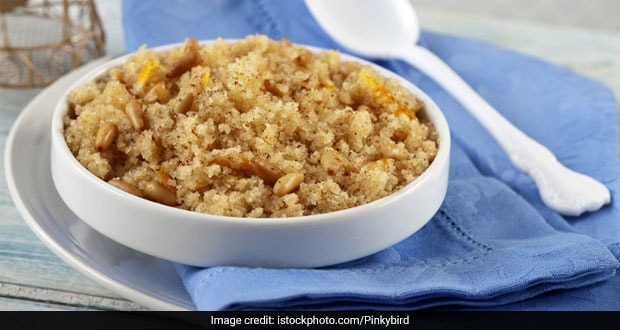
Suji Ka Halwa Recipe | Suji Ka Halwa | Halwa Recipe
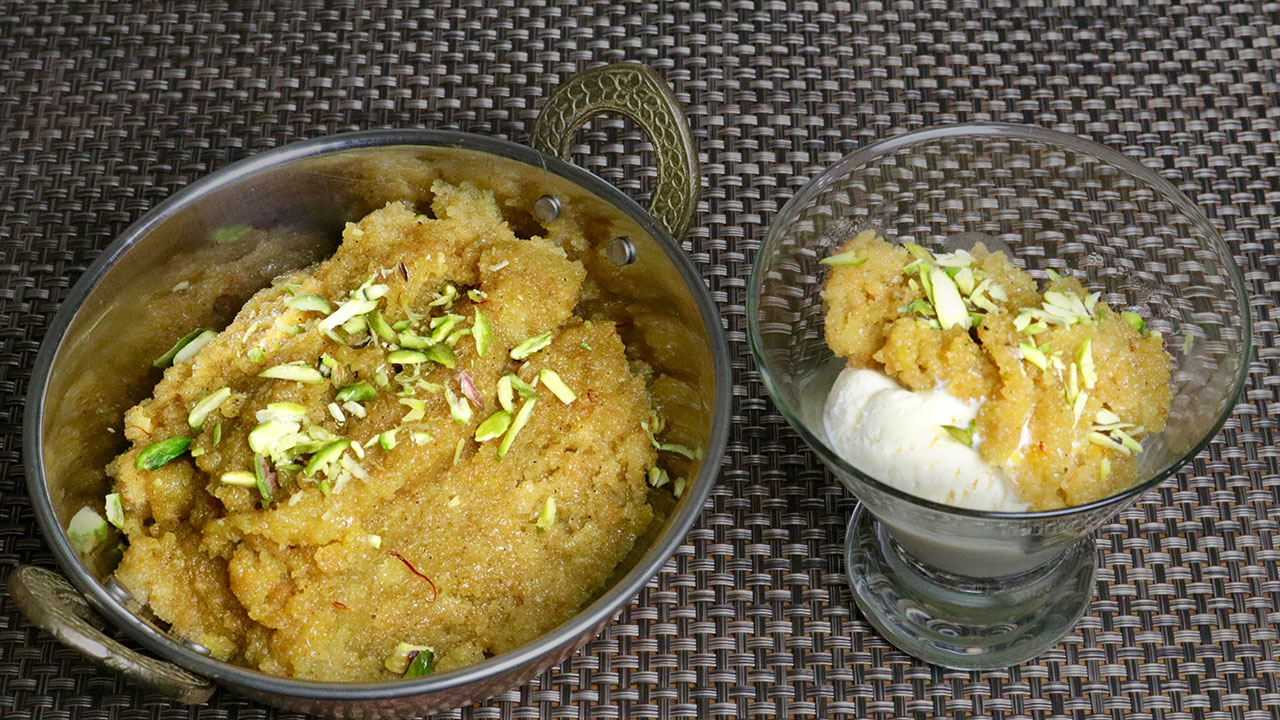
Sooji ka Halwa | Suji Halwa Recipe | Best Suji Halwa Recipe
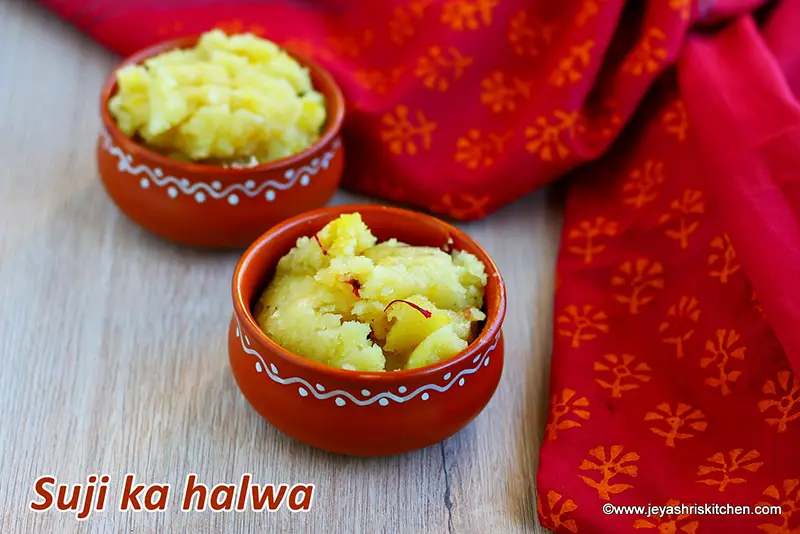
:max_bytes(150000):strip_icc()/semolina-halwa-dessert-1957814_15_preview-5b05f2ac119fa8003a98e0a9.jpeg)
